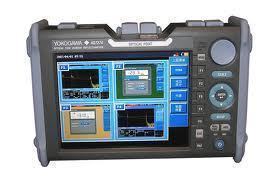What is an OTDR?
An OTDR (Optical Time Domain Reflectometer) measures the time and intensity of light reflected on optical fiber in a fiber optic cable. It is primarily used to troubleshoot fiber lines to identify splices, bends, and faults, and is specifically geared to locating any light loss in a fiber line.
Why is Identifying Light Loss Important?
When a fiber optic cable experiences light loss, it interferes with data transmission. OTDRs can detect light loss and identify the trouble areas in the line, which helps technicians to make repairs. Companies that own fiber cables can use OTDRs to minimize the degradation experienced from light loss in their respective network(s) and ultimately save money.
How does an OTDR Work?
An OTDR injects laser pulses into the fiber cable, then measures the reflection and backscatter of light over time. These characteristics are then scrutinized to locate fiber optic slice or break losses in the line. In order to use an OTDR, it has to be connected to the optical fiber with connector cables that are similar to the ones used to charge a car battery. Typical OTDR tests take between 10 seconds and more than 3 minutes to conduct based on the length and complexity of the fiber line being tested. More recently designed OTDRs can connect to a computer in order to conduct more complex data analysis and historical storage.
What are the Issues with OTDRs?
OTDRs do not seem to have error-proof application. If there are multiple trouble spots in close proximity to each other or the testing pulse has a long distance to travel, the test results may be inaccurate. OTDRs are also quite expensive and a small business or network may not necessarily benefit from purchasing one. Furthermore, many organizations that purchase an OTDR to test network infrastructure do not realize that they have to also spend money on training network technicians to use and interpret the device’s measurements.


Comments - One Response to “What is an OTDR?”
Sorry but comments are closed at this time.